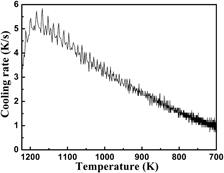Article contents
Sinter-hardening with concurrent improved plasticity in iron alloys induced by spark plasma sintering
Published online by Cambridge University Press: 01 May 2014
Abstract

We report on the occurrence of sinter-hardening with concurrent improved plasticity in fine-grained Fe79.3Mo4.5P8.1C6.75B1.35 bulk alloys fabricated by spark plasma sintering (SPS) of metallic glass composite powder. When the sintering temperature is higher than the austenite transformation temperature, the as-fabricated bulk alloys are composed of expected wattle martensite plus Fe3P, Fe7C3, and Fe3Mo3C. Meanwhile, the martensite-containing bulk alloys exhibit increased hardness, fracture strength as well as concurrent improved plasticity. The fracture stress and strain of the martensite-containing bulk alloys are as high as 2573 MPa and 8.6%, respectively. The formation of the martensite microstructure is attributed to that high sintering temperature leads to the austenitization transformation and consequently formed austenite partially transforms into martensite under rapid cooling rate provided by SPS system. The results obtained provide insight into fabrication of iron alloys with good mechanical property by powder metallurgy.
- Type
- Articles
- Information
- Copyright
- Copyright © Materials Research Society 2014
References
REFERENCES
- 2
- Cited by




